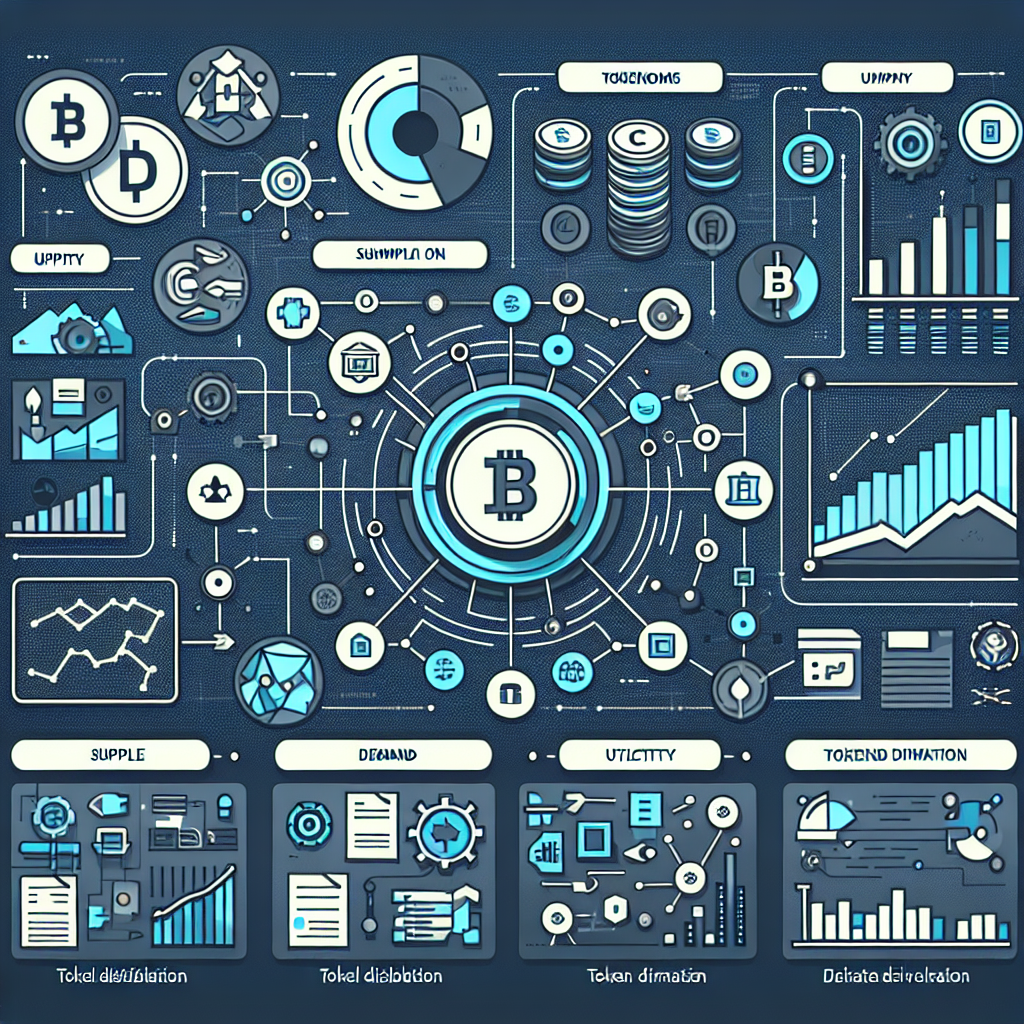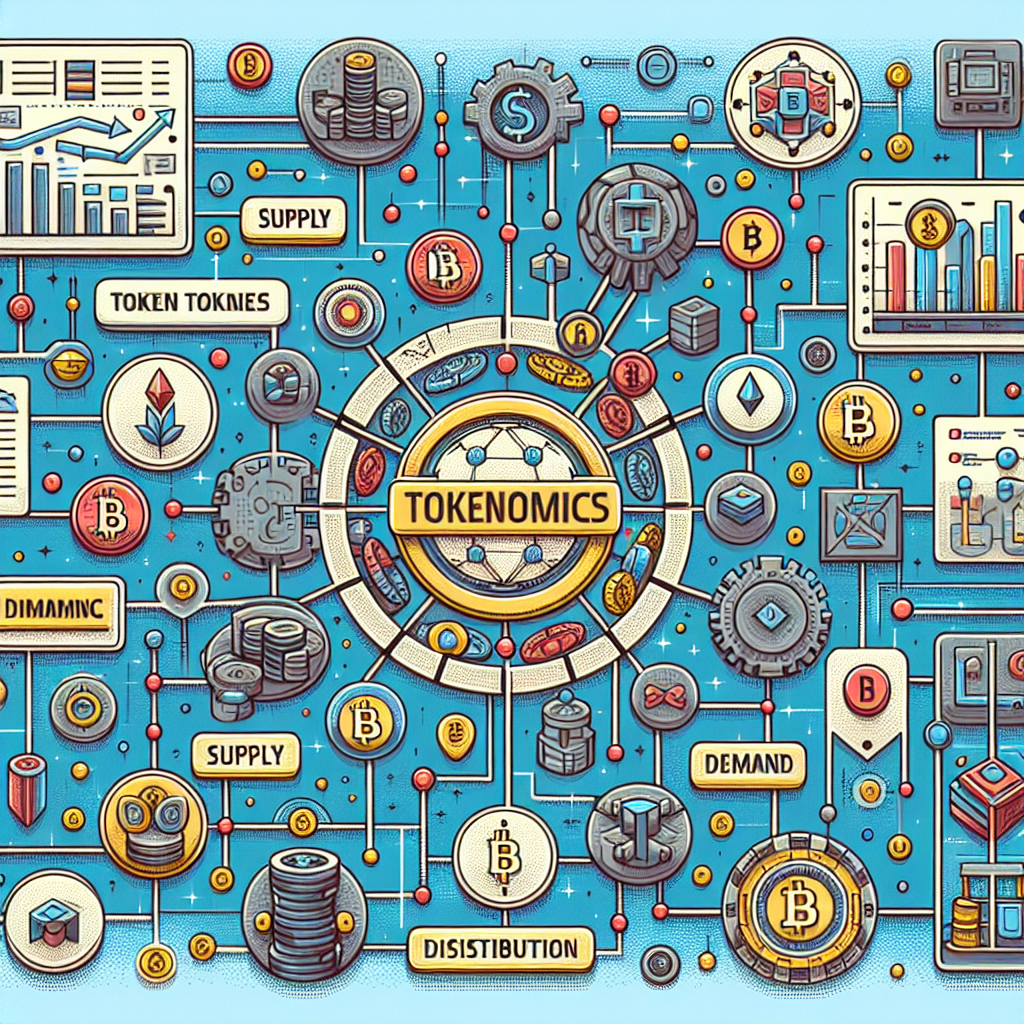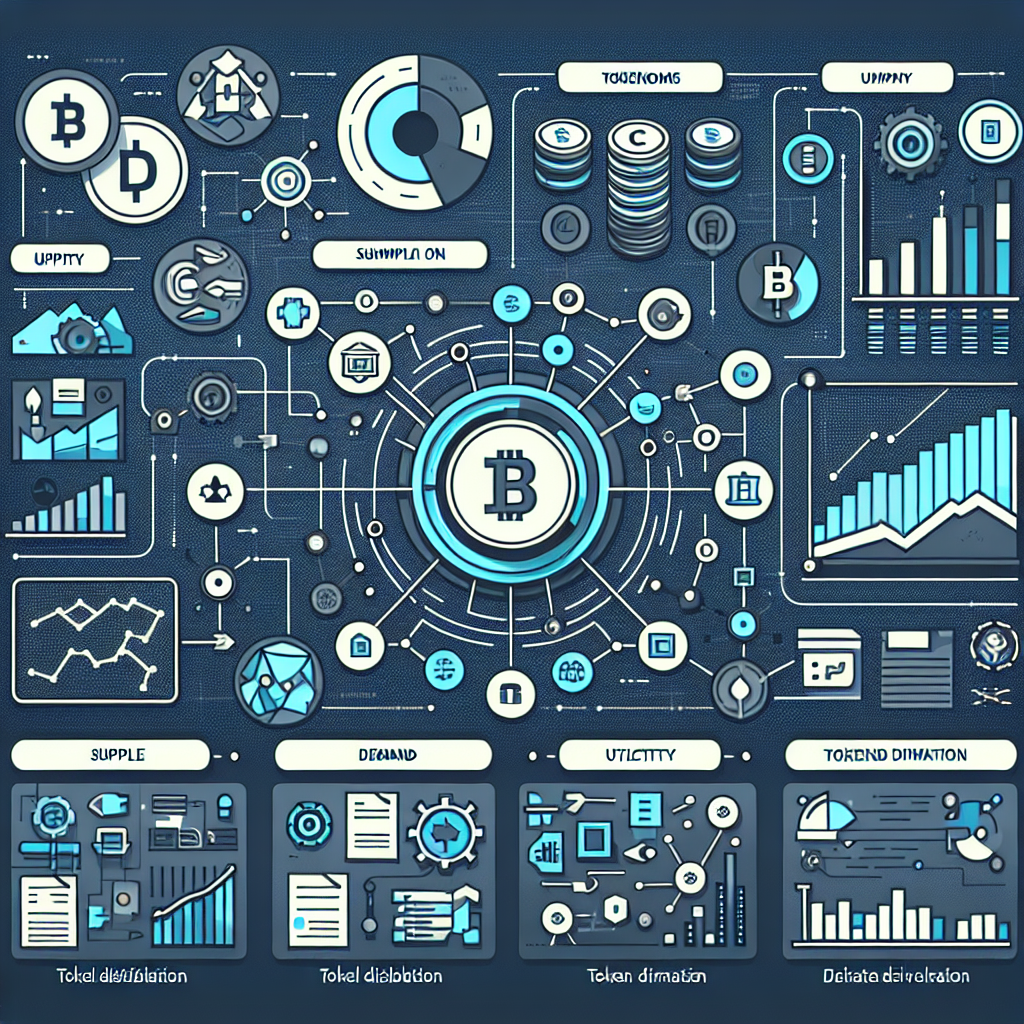In the world of cryptocurrencies, Tokenomics plays a crucial role that cannot be overlooked. Tokenomics refers to the study of how digital assets, known as tokens, function within a blockchain ecosystem. Understanding the importance of Tokenomics is vital for investors, developers, and enthusiasts alike, as it influences the value, utility, and sustainability of a cryptocurrency. By examining factors such as token distribution, supply and demand dynamics, and the underlying economic principles, Tokenomics provides insights into the long-term viability and growth potential of a cryptocurrency. So, let’s delve into the fascinating world of Tokenomics and explore its significance in the realm of cryptocurrencies.
The Basics of Tokenomics
Definition of Tokenomics
Tokenomics refers to the study of the economic aspects of cryptocurrencies and blockchain networks. It encompasses the design, implementation, and analysis of the token economy within these systems. Tokenomics delves into the various factors that contribute to the value, utility, and functionality of tokens, as well as their distribution, governance, and economic incentives.
The Role of Tokens in Cryptocurrencies
Tokens play a crucial role in cryptocurrencies, serving as a medium of exchange, store of value, and unit of account within the blockchain ecosystem. They enable peer-to-peer transactions, facilitate the transfer of value, and serve as a representation of ownership or access rights to digital assets. Tokens also serve as a means of incentivizing participants in the network and can be used to unlock specific functionalities within decentralized applications (dApps).
Tokenomics vs. Traditional Economics
While traditional economics focuses on studying the behavior of individuals and the dynamics of markets in the real world, tokenomics has a distinctive focus on the digital sphere. Tokenomics takes into account the unique characteristics and challenges presented by cryptocurrencies and blockchain technology. It considers factors such as decentralized governance, smart contracts, and programmability that differentiate token economics from traditional economic systems.
Intrinsic Value of Tokens
Understanding Intrinsic Value
Intrinsic value refers to the fundamental worth of a token based on its utility, scarcity, and demand. Unlike traditional currencies or assets, which often derive their value from external factors such as government backing or physical properties, tokens derive their intrinsic value from their functionality within a specific blockchain network. This intrinsic value can stem from their use in accessing services, participating in governance, or representing ownership of digital assets.
Use Cases for Intrinsic Value
The intrinsic value of tokens opens up a wide range of use cases within the crypto ecosystem. For example, utility tokens can be used to access specific services or products offered by decentralized applications. Security tokens can represent ownership of assets such as real estate or company shares on the blockchain. Governance tokens give holders the right to participate in decision-making processes within a decentralized organization. These use cases highlight how intrinsic value drives the utility and functionality of tokens.
Implications for Token Holders
Understanding the intrinsic value of tokens is essential for token holders. It enables them to assess the long-term potential of a token and make informed investment decisions. Tokens with strong intrinsic value are more likely to maintain their value over time and attract continued demand. Token holders also benefit from the ability to utilize tokens for specific purposes within the ecosystem, such as accessing services or participating in governance, thereby maximizing their participation and engagement.

Token Distribution and Supply
Initial Coin Offerings (ICOs)
Initial Coin Offerings, or ICOs, are a common method of token distribution used by blockchain projects. During an ICO, tokens are sold to investors in exchange for established cryptocurrencies, such as Bitcoin or Ethereum, or fiat currencies. ICOs enable projects to raise funds for development and distribute their tokens to a wide investor base. The distribution of tokens through ICOs plays a crucial role in establishing initial market demand and liquidity for the token.
Token Burns and Buybacks
Token burns and buybacks are mechanisms used to manage token supply and create scarcity. Token burns involve permanently removing tokens from circulation, reducing the total supply and potentially increasing the value of each remaining token. Buybacks, on the other hand, involve using project funds to purchase and remove tokens from the market. Both these strategies reduce the circulating supply, which can positively impact the scarcity and value of the token.
Inflationary vs. Deflationary Tokens
Tokens can be designed to have either inflationary or deflationary properties. Inflationary tokens have a mechanism in place to increase the token supply over time, which can be used to incentivize network participants or fund ongoing development. Deflationary tokens, in contrast, have a mechanism that decreases the token supply, typically through burns or buybacks, creating scarcity and potentially increasing the token’s value. The choice between inflationary and deflationary tokenomics depends on the project’s goals and objectives.
Token Utility and Functionality
Utility Tokens
Utility tokens are tokens that are primarily designed to provide access to specific products, services, or features within a blockchain ecosystem. These tokens are used as a means of payment to access certain functionalities, such as using a dApp or obtaining a particular service. Utility tokens are typically integral to the functioning of the network and are often required to be held or staked to access certain privileges, incentivizing token holders to participate actively within the ecosystem.
Security Tokens
Security tokens represent ownership or rights to a specific asset, such as real estate, company shares, or debt instruments. Unlike utility tokens, security tokens fall under existing securities regulations and are subject to regulatory compliance. These tokens provide traditional financial functionalities on the blockchain, such as dividends, profit sharing, or voting rights. Security tokens offer the potential to tokenize real-world assets and enable fractional ownership and increased liquidity.
Governance Tokens
Governance tokens grant holders the right to participate in the decision-making processes of a decentralized organization or protocol. These tokens allow holders to vote on proposed changes, upgrades, or strategic decisions within the network. Governance tokens provide a mechanism for token holders to have a say in the direction and evolution of the project, promoting decentralized decision-making and community engagement. The distribution and utilization of governance tokens are essential for maintaining decentralized governance models.

Community Engagement and Governance
Importance of Community in Tokenomics
Community plays a vital role in the success and sustainability of tokenomics. A vibrant and engaged community can contribute to the growth, adoption, and development of a blockchain project. These communities act as ambassadors, advocates, and contributors, who actively participate in discussions, provide feedback, and even build on top of the project. The involvement of the community is crucial in maintaining the value and utility of tokens, as well as driving innovation and network effects.
Token Holder Rights and Voting Power
Token holders often have certain rights and voting power that allow them to influence the governance and decision-making processes of a project. These rights can include voting on proposals, participating in consensus mechanisms, or having a say in key network parameters. Token holders’ voting power is often proportional to the number of tokens they hold, incentivizing them to actively participate in the project’s governance and align their interests with the long-term success of the ecosystem.
Decentralized Governance Models
Decentralized governance models, enabled by blockchain technology, provide an opportunity for stakeholders to collectively govern and shape the future of a project. These models distribute decision-making power among the community, reducing reliance on centralized authorities and promoting transparency, inclusivity, and accountability. Decentralized governance encourages token holders to actively engage in decision-making processes, aligning incentives, and fostering a sense of ownership and responsibility within the community.
Value Creation and Token Economics
The Network Effect
The network effect plays a crucial role in the success and value creation of tokens. As the number of participants and users within a blockchain network increases, the value and utility of the token also tend to increase. This positive feedback loop encourages adoption and further participation in the ecosystem. The network effect can enhance the token’s scarcity, demand, and overall value, making it more attractive to potential investors, users, and developers.
Token Velocity
Token velocity refers to the speed at which tokens are exchanged or used within a network. High token velocity can lead to reduced value, as it implies that tokens are quickly bought and sold without being held for a substantial period. Conversely, low token velocity indicates that tokens are being held and utilized for longer periods, potentially contributing to increased scarcity and value. Understanding and managing token velocity are crucial for maintaining price stability and sustainable token economics.
Tokenomics and Price Stability
Price stability is an essential consideration for the long-term viability of a token. While some volatility is inevitable in the cryptocurrency market, excessive price fluctuations can hinder adoption and utility. Tokenomics can play a critical role in price stability by implementing mechanisms such as token burns, inflationary/deflationary tokenomics, buybacks, or creating incentives for token holders to act in ways that stabilize the token’s price. Balancing supply, demand, and utility is necessary for creating a stable token economy.
Token Economics and Economic Incentives
Aligning Incentives
Tokenomics focuses on aligning incentives between stakeholders, ensuring that all parties are motivated to act in the best interest of the network. Properly aligned economic incentives can drive desired behaviors, such as active participation, contribution, and engagement within the ecosystem. Tokenomics allows projects to design incentives that benefit token holders, developers, users, and validators, creating a self-sustaining ecosystem that fosters growth, innovation, and network effects over time.
Rewarding Token Holders and Contributors
Token economics can incorporate mechanisms to reward token holders and contributors, acknowledging their role in the success of the project. Reward systems can be designed to distribute tokens proportionally based on various factors, such as the number of tokens held, contributions made, or participation in governance activities. By rewarding active participants, tokenomics encourages ongoing support, enhances community engagement, and contributes to the long-term sustainability and value creation within the ecosystem.
Behavioral Economics in Token Design
Behavioral economics principles can be applied to token design to shape user behavior and promote desired actions. By understanding human psychology and decision-making biases, tokenomics can be designed to incentivize actions that are beneficial for the network and its participants. For example, tokenomics can use token locking mechanisms or time-dependent rewards to encourage users to hold tokens for longer periods, contributing to increased scarcity and potential price appreciation.
Tokenomics and Token Valuation
Market Cap vs. Token Supply
Token valuation is an essential aspect of tokenomics and involves assessing the token’s market capitalization (market cap) and its circulating supply. Market cap represents the total value of all tokens in circulation and is often used as a measure of a token’s size and liquidity. While market cap provides a basic understanding of a token’s value, it is crucial to consider factors such as token utility, intrinsic value, network effects, and demand dynamics when evaluating a token’s long-term growth potential.
Token Metrics and Valuation Models
Tokenomics incorporates various metrics and models to evaluate the value and potential of a token. These include metrics such as total supply, circulating supply, token allocation, token distribution, and token velocity. Valuation models can also incorporate factors like network activity, adoption rate, development progress, and competition analysis to estimate a token’s future value. Proper evaluation of token metrics and valuation models is essential for making informed investment decisions in the crypto space.
Evaluating Tokenomics in Investment Decisions
When considering investing in a cryptocurrency or blockchain project, evaluating the tokenomics is crucial. Understanding the token’s utility, distribution, governance, incentive structures, and potential for value appreciation can help determine the project’s viability and long-term prospects. It is essential to assess the economic fundamentals, growth potential, and alignment of incentives within the token economy. Thorough due diligence and analysis of tokenomics can mitigate risks and support informed investment decision-making.
Tokenomics in Decentralized Finance (DeFi)
DeFi’s Role in Tokenomics
Decentralized Finance, or DeFi, has emerged as a prominent area where tokenomics plays a crucial role. DeFi projects leverage blockchain and smart contract technologies to provide financial services such as lending, borrowing, trading, and yield farming in a decentralized manner. Tokenomics is central to DeFi protocols, enabling the creation of governance tokens, yield-bearing assets, liquidity pools, and innovative financial products. DeFi tokenomics promotes financial inclusion, transparency, and composability, revolutionizing traditional financial systems.
Liquidity Mining and Yield Farming
Liquidity mining and yield farming are popular concepts within DeFi that utilize tokenomics to incentivize liquidity provision and user participation. Liquidity mining involves rewarding users who provide liquidity to decentralized exchanges or lending platforms with additional tokens, creating liquidity incentives. Yield farming, on the other hand, involves users strategically moving their funds across different protocols to maximize returns in the form of token rewards. These mechanisms drive participation, liquidity, and engagement within the DeFi ecosystem.
The Impact of Tokenomics on DeFi Platforms
Tokenomics significantly influences the success and sustainability of DeFi platforms. Well-designed token economics can attract liquidity providers, users, and developers to the ecosystem, creating a positive feedback loop. Properly aligned incentives can drive the growth of lending and borrowing markets, enhance liquidity, and promote the adoption of innovative financial products. Tokenomics also plays a crucial role in managing risk, maintaining price stability, and preventing market manipulation within DeFi platforms.
Future Trends in Tokenomics
Interoperability and Cross-Chain Tokenomics
Interoperability and cross-chain tokenomics are emerging trends that focus on bridging various blockchain networks and enabling seamless token transfers and functionality across different protocols. Interoperable tokenomics allow for the exchange of value and data between distinct blockchain ecosystems, creating a unified and interconnected digital economy. These advancements facilitate increased liquidity, scalability, and composability, further expanding the possibilities and potential of tokenomics.
Tokenization of Real-World Assets
Tokenization of real-world assets is an area where tokenomics is poised to make a significant impact. By representing ownership or fractional ownership of physical assets on the blockchain, tokenization enables increased liquidity, accessibility, and efficiency in traditional markets. Tokenized assets such as real estate, artworks, or commodities can be traded easily, 24/7, with reduced costs and intermediaries. Tokenization introduces new investment opportunities, unlocks value in illiquid assets, and democratizes access to previously restricted markets.
Machine-to-Machine Tokenomics
Machine-to-machine (M2M) tokenomics refers to the exchange of value or services between autonomous machines or IoT devices using tokens. This concept envisions a future where machines interact and transact with each other, facilitating automated and decentralized value exchange without human intervention. M2M tokenomics presents opportunities for various industries, such as supply chain management, energy grids, or transportation systems. It has the potential to revolutionize business processes, enhance efficiency, and foster new economic ecosystems.
As cryptocurrency and blockchain technology continue to evolve, tokenomics will play an increasingly vital role in shaping the future of the digital economy. Understanding the basics of tokenomics, including intrinsic value, token distribution, utility, community governance, and economic incentives, is essential for navigating the complex world of cryptocurrencies. Whether you are an investor, entrepreneur, or simply curious about the potential of blockchain technology, exploring the intricacies of tokenomics can provide valuable insights into this transformative space.

